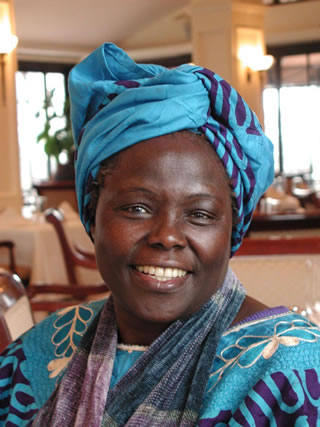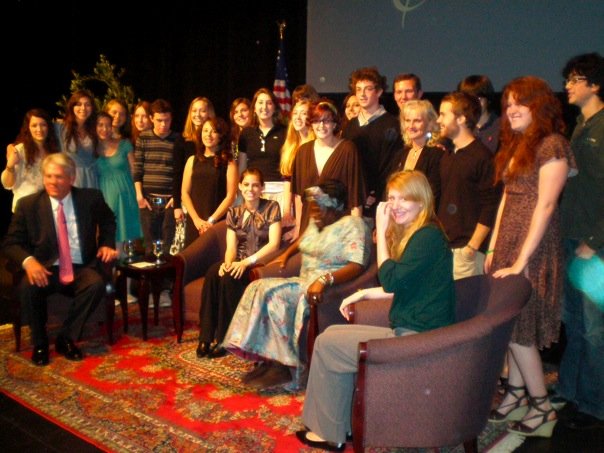Southwestern University may be a small campus unbeknown to most, yet, this university has big plans for becoming a leader of sustainability in the state of Texas. Only about 1,300 students call Southwestern home, and roughly 60 members of the student body are involved in the university’s environmental organization, Students for Environmental Activism and Knowledge (SEAK). Since SEAK’s genesis a few years back, it has been SEAK’s long-existing goal for Southwestern University’s president to sign onto the American College and University Presidents Climate Commitment. This past ambition finally became a reality for Southwestern this past Tuesday, February 10, 2008, when President Jake Schrum signed the Commitment.
Southwestern University is now amongst the 600 other colleges and universities that have signed onto this agreement throughout the United States. Furthermore, Southwestern’s cooperation with the PCC makes it: the 18th college in Texas to sign the PCC, the only other college in Central Texas (Houston-Tillotson is the other)to also sign the PCC, and the one of two universities that has signed both the PCC and Talloires (“Tal-wahr”) Declaration–an international initiative related to sustainability in higher education.
Specifically, President Schrum’s pledge to the PCC entails that he must:
* Complete an emissions inventory.
* Within two years, set a target date and interim milestones for becoming climate neutral. This means either emitting no greenhouse gases, or offsetting emissions through energy credits and other methods.
* Take immediate steps to reduce greenhouse gas emissions by choosing from a list of short-term actions.
* Integrate sustainability into the curriculum and make it part of the educational experience.
* Make the action plan, inventory and progress reports publicly available.
The recent signing took place at the University’s Roy and Margaret Shilling Lecture series, where environmental and political activist, Wangari Maathai, served as the guest speaker.  Wangari Maathai currently hails from Nairobi, Kenya. In 2004, she became the first African American woman to receive a Nobel Peace Prize. She was honored for her “contribution to sustainable development, democracy, and peace”. Most of her environmental efforts were concentrated in Africa’s Green Belt Movement, which she founded in 1977. More recently, between the years of 2003-2005, she was an elected member of Parliament and served as the Assistant Minister of Environment and Natural Resources under the government of President Mwai Kibaki of
Wangari Maathai currently hails from Nairobi, Kenya. In 2004, she became the first African American woman to receive a Nobel Peace Prize. She was honored for her “contribution to sustainable development, democracy, and peace”. Most of her environmental efforts were concentrated in Africa’s Green Belt Movement, which she founded in 1977. More recently, between the years of 2003-2005, she was an elected member of Parliament and served as the Assistant Minister of Environment and Natural Resources under the government of President Mwai Kibaki of  Kenya.
Kenya.
After an hour long lecture on her past involvements and future hopes concerning the environment, she congratulated the University on it’s efforts to build a sustainable future in world “periled with climate challenges. “I want the whole world to copy your actions at Southwestern University,” she said.
For more information about Wangari Maathai, check out this video which highlights her work from her 2008 documentary, “Taking Root”: <http://www.youtube.com/watch?v=p5GX6JktJZg>
Beyond Southwestern’s recent initiative to sign onto the PCC, the campus has also made many efforts to become the most sustainable campus it can be by implementing the following features:
* A “Civic Engagement/Green Hall” opened in the new Dorothy Manning Lord Residential Center in fall 2007.
* The new Wilhelmina Cullen Admission Building was designed to be a green building, and Southwestern has applied for the building to become certified under the U.S. Green Building Council’s LEED (Leadership in Energy and Environmental Design) program. The building was designed with the goal of Gold LEED certification, the second highest possible certification.
* The Center for Lifelong Learning, which is currently under construction, was also designed to be a “green” building.
* Southwestern students have organized two environmental summits for area high school students.
* Students have been given consecutive grants to attend the national Powershift Conference in Washington DC and are consistent participants in ReEngerize Texas.
* The university has made recycling bins available in all campus offices. Both paper, plastic and aluminum cans are now recycled.
* Southwestern students, faculty and staff members are constructing an organic community garden behind the Studio Arts Building this semester.
* Compost piles for food waste also have been set up near the community garden.
* When Herman Brown and Moody-Shearn Residence Halls were renovated in summer 2008, the old fixtures and furniture was picked up by an organization that could recycle them.
* The custodial staff is phasing in the use of all green cleaning products.
* Students have been working with the Sodexo staff to have the Commons go “trayless.”
As a student of Southwestern and member of SEAK, I speak from experience when I say that it is no easy task to make sustainability a number one priority on such a small campus. I feel assured that most smaller schools in America have environmental groups on campus, or at least a few students who are interested in bringing sustainability to their campus. My advice to all of you is to organize and incite some environmental action on your campus as best as possible! It’s never an easy task when it’s just a few students, but there are so many possibilities to become involved in progressive environmental action. Attending local conferences, organizing environmentally-themed parties/mixers, talking to your campus president about your school’s environmental policies, gardening, or even just starting a environmental club on campus are just a few initial steps a small campus can take to gain green recognition amongst the student body.
Kudos to Southwestern and all other universities around the world working to create sustainable learning institutions that will positively benefit the environment we all share!
On behalf of Public Citizen Texas and Southwestern University,
Melissa Dison
Southwestern University c/o 2011
Read Full Post »



 This is an issue that has been bothering me for some time, but does not get as much play in political discourse I think it should. In my opinion the high cost of education and my generation’s huge accumulation of loan debt are likely to be one of the biggest problems that ordinary people in this country face.
This is an issue that has been bothering me for some time, but does not get as much play in political discourse I think it should. In my opinion the high cost of education and my generation’s huge accumulation of loan debt are likely to be one of the biggest problems that ordinary people in this country face. Wangari Maathai currently hails from Nairobi, Kenya. In 2004, she became the first African American woman to receive a Nobel Peace Prize. She was honored for her “contribution to sustainable development, democracy, and peace”. Most of her environmental efforts were concentrated in Africa’s Green Belt Movement, which she founded in 1977. More recently, between the years of 2003-2005, she was an elected member of Parliament and served as the Assistant Minister of Environment and Natural Resources under the government of President Mwai Kibaki of
Wangari Maathai currently hails from Nairobi, Kenya. In 2004, she became the first African American woman to receive a Nobel Peace Prize. She was honored for her “contribution to sustainable development, democracy, and peace”. Most of her environmental efforts were concentrated in Africa’s Green Belt Movement, which she founded in 1977. More recently, between the years of 2003-2005, she was an elected member of Parliament and served as the Assistant Minister of Environment and Natural Resources under the government of President Mwai Kibaki of  Kenya.
Kenya.

